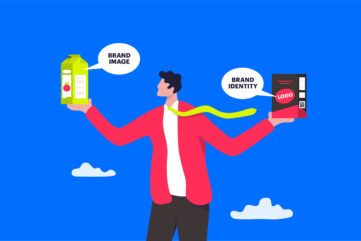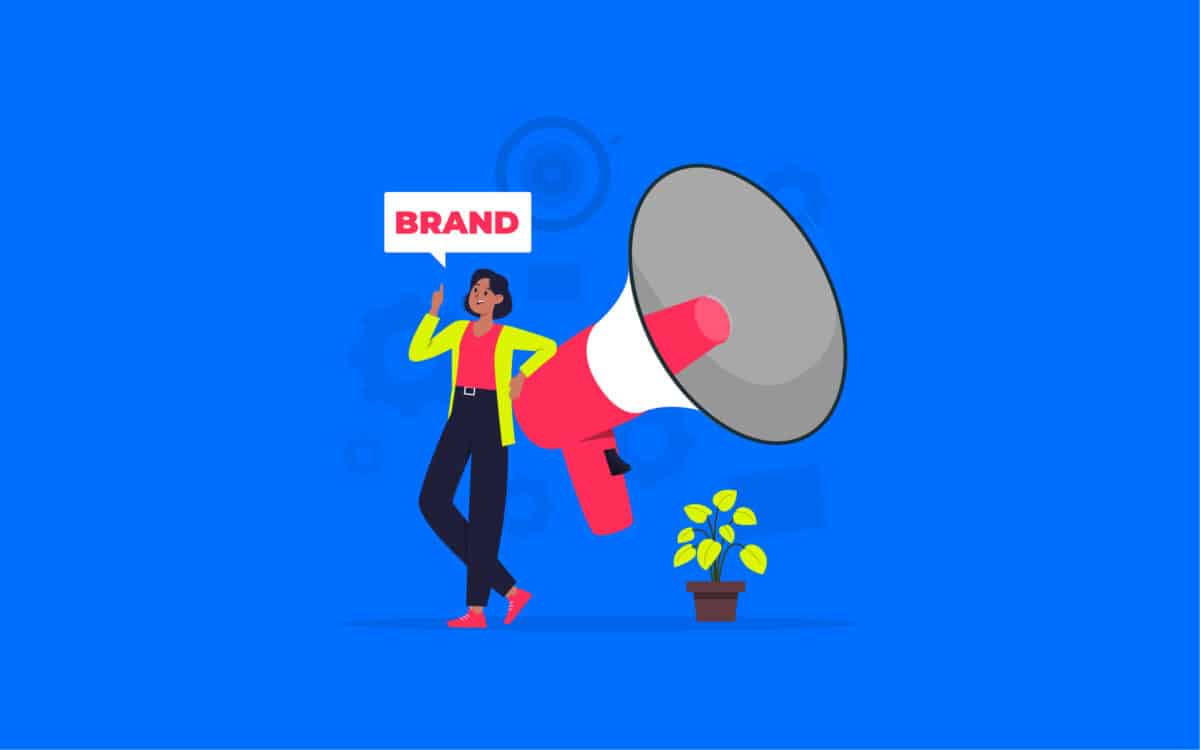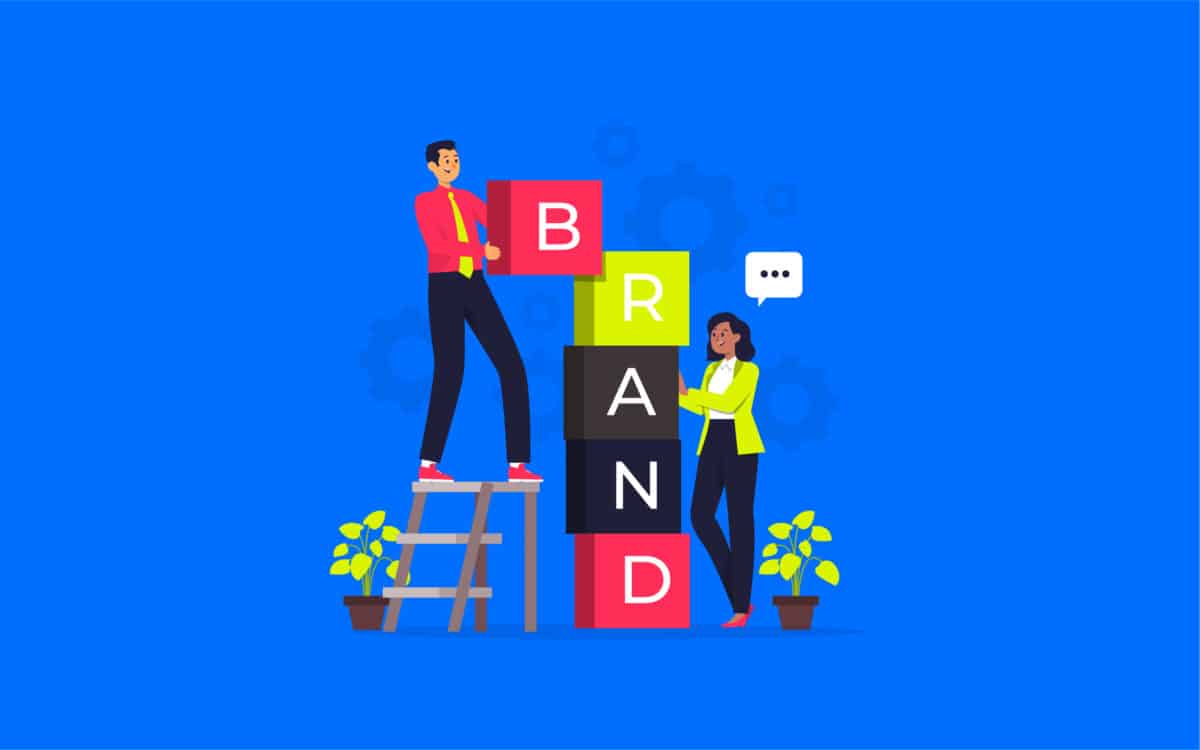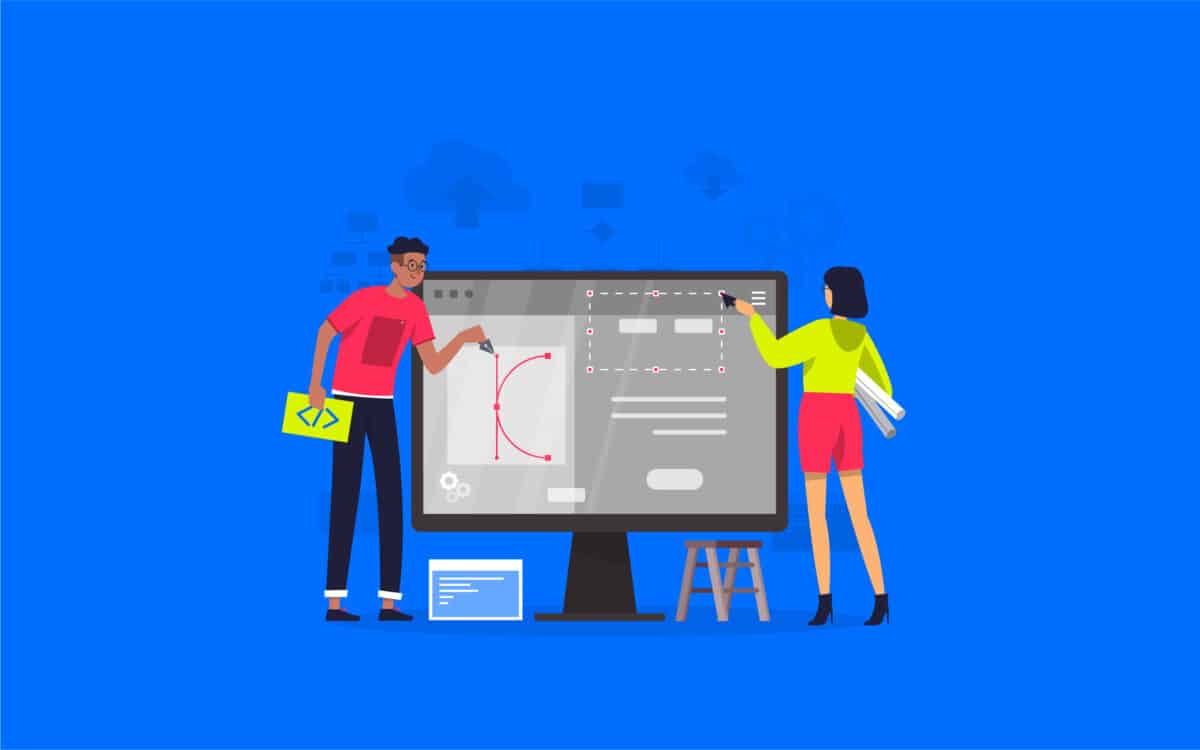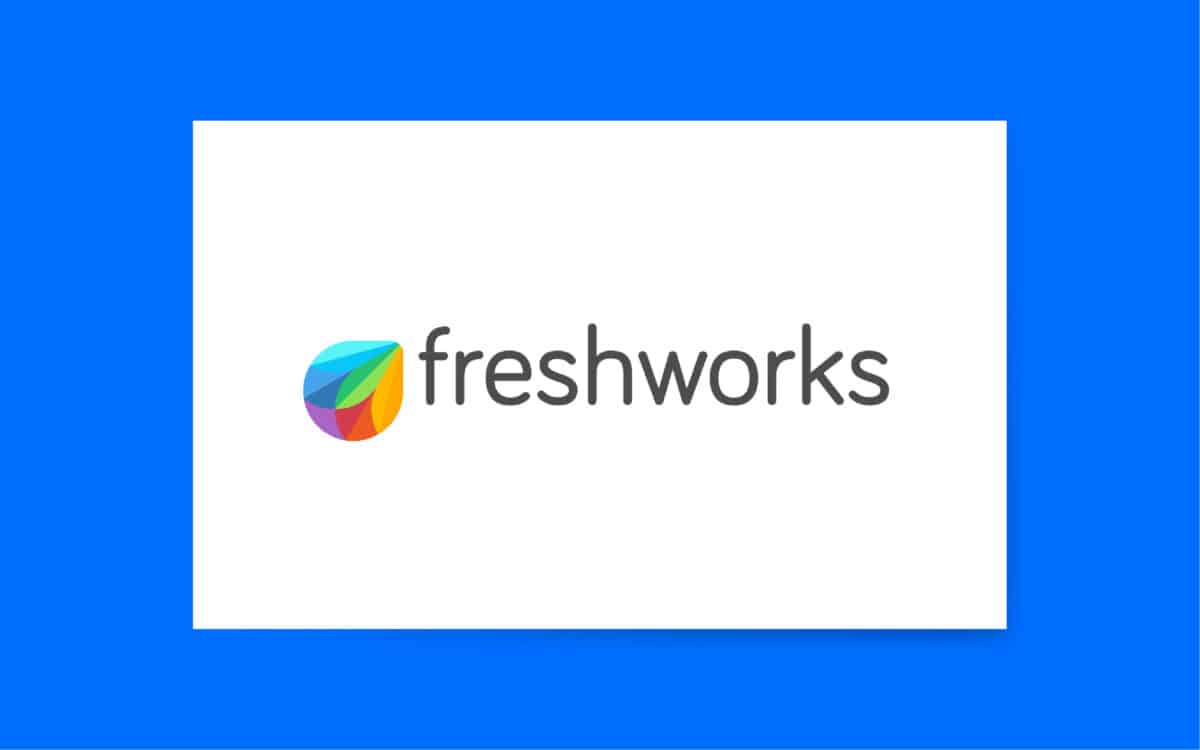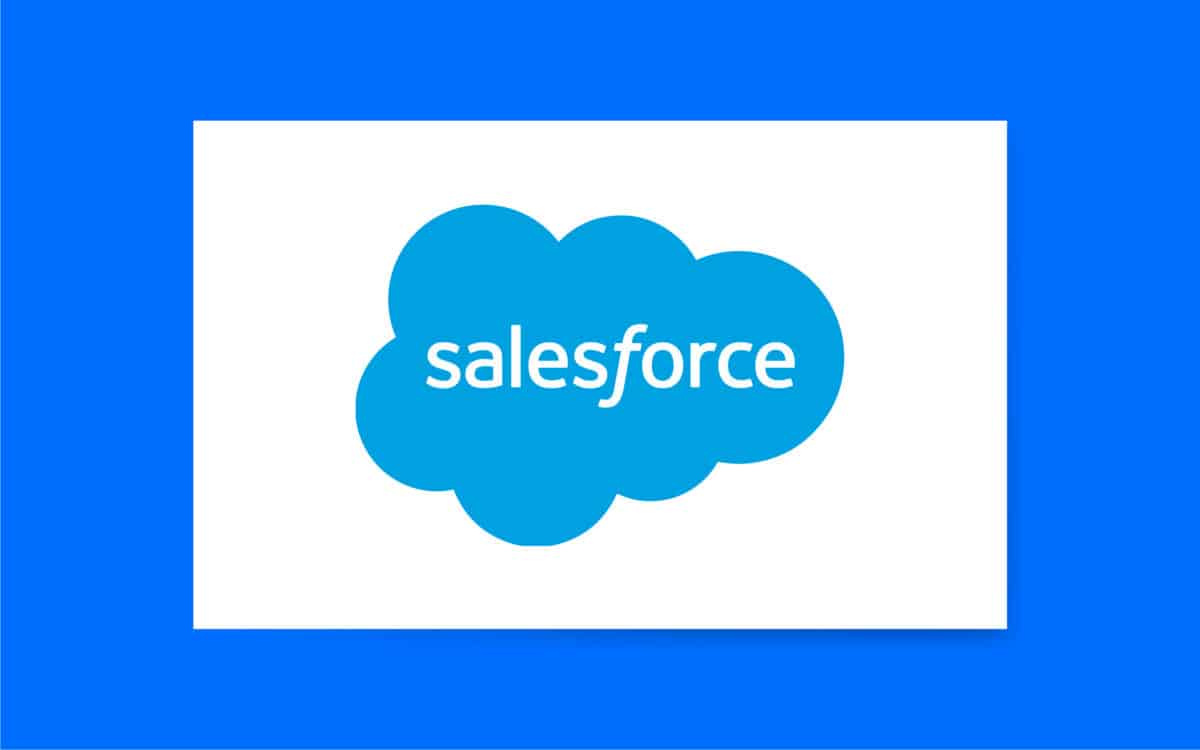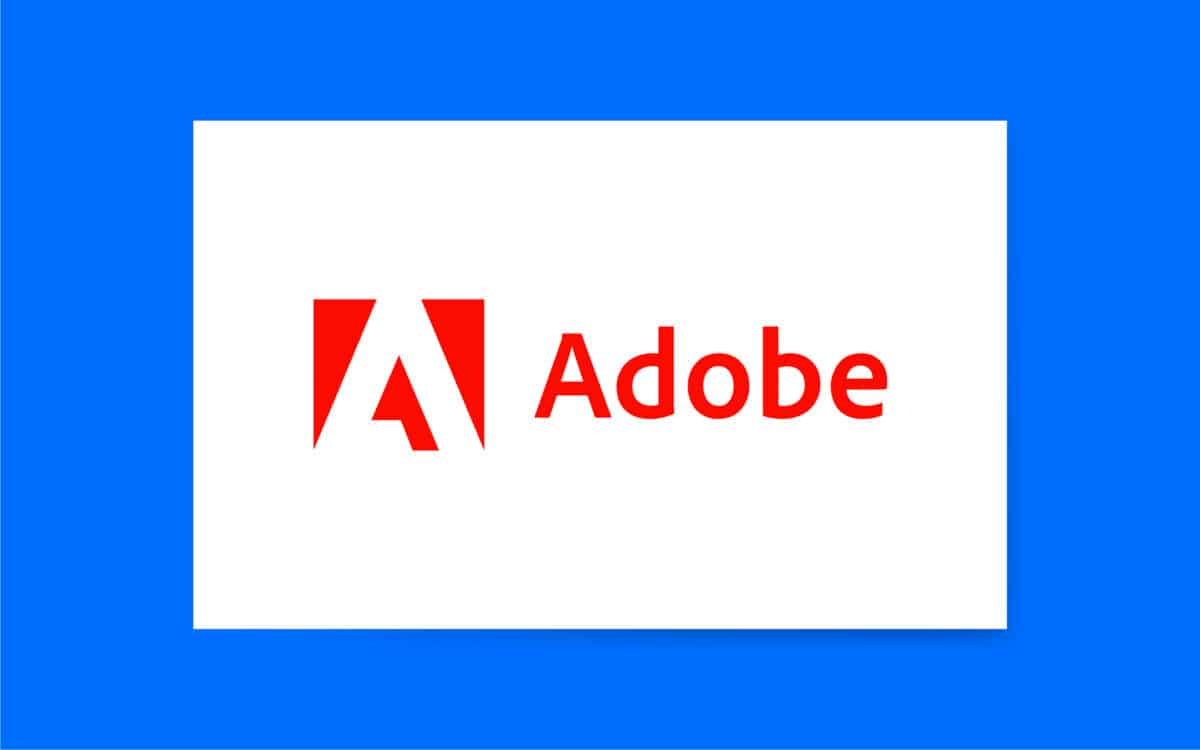How to brand a software company: The essential guide to software company branding

Learning how to brand a software company effectively is one of the most critical steps in setting your venture up for success. After all, as the software landscape continues to grow at an exceptional rate, endless competitors are battling for the same customers. Good software branding is how you make your organization stand out.
The demand for software is growing at a phenomenal speed. The “digital transformation” age has arrived, and countless consumers and companies are searching for software every day. In fact, by 2030, the market for software and services is expected to reach a value of $525.77 billion.
With all of this opportunity comes an increase in competition. Around 305 million new startups are launched each year, not to mention numerous giants with an existing hold in the software space.
You’ll find yourself competing against everyone from Microsoft and Salesforce to newcomers in the digital space. Your brand is how you build the foundations for success.
Software branding involves building a unique identity for your company and the solutions you offer. It helps you form a long-lasting relationship with customers, which paves the way for ongoing revenue, loyalty, and new opportunities.
So, where do you begin?
Why is branding important in the software industry?
Before we cover the basics of how to brand a software company, it’s worth covering why branding is crucial in the first place. Look at some of the biggest software brands in the world.
Organizations like Google, Adobe, and HubSpot aren’t just famous for their products. They also have a strong relationship with their audience, built through a careful brand strategy.
Research tells us people don’t just buy products and solutions based on a logical need. If they did, the company with the highest selection of features for the lowest price would always win the day. Instead, we purchase products based on how we feel about a company.
Your brand helps you to build affinity with your target audience and develop loyalty which keeps customers coming to you, even when cheaper or more advanced products are available.
Effective software company branding:
Differentiates your company
Endless software brands are on the market today, all offering similar products and solutions. Unless you can create an entirely new product, you’ll be reliant on your brand to separate your organization from the competition.
Your brand is what helps people to define your venture as unique. Anyone can copy a piece of coding or programming, but an effective brand is hard to replicate.
Develops customer relationships
Brands allow companies in the software space to form emotional connections with their audience. In a world full of video conferencing tools, people still buy from Zoom because they love the company’s fun and friendly approach.
Studies show customers who feel connected to a company spend twice as much.
Guides your growth
You can attract customers and investors with an effective software brand, positioning yourself as a clear competitor in your chosen space. Your software brand will also act as a compass when you’re making decisions on how to grow your business.
Your brand will determine which new features you add, what services you provide, and how you approach your go-to-market strategy.
What makes a good brand in the software sector?
Effective software branding can take time and effort to master. There’s more to making your software brand stand out than choosing a memorable name and a good logo. Effective brand identities come from careful research and constant optimization.
The best software brands thrive because they understand their target audience. Look at Zendesk.
The company positions itself as a thought leader and a friendly, supportive company committed to helping its clients reach their goals. They offer exceptional customer support, resources, and even demonstrations to help businesses get up to speed.
Salesforce has built its brand around empowering people. It’s the number one CRM in the world, not just because it offers a wide range of innovative features but also because it has a fantastic community built around the concept of “Ohana.”
Salesforce offers certifications, training courses, and support to platform users. It also constantly showcases its successes with authentic, endearing customer stories.
While every software company branding initiative is different, the best organizations are built around the following:
Vision
Software companies aren’t just innovators; they’re problem solvers. They deliver solutions specifically designed to address key pain points and customer needs. They understand their target audience and build their company around shared values.
Shopify built its brand around a vision to make “commerce better for everyone.”
Empowerment
Some of the most popular software companies in the world have achieved success simply because they empower their users to accomplish more. Every feature a software company offers should address a specific need or goal for its target audience.
The best companies are constantly innovating to further support their audience. They also offer educational resources and guidance every step of the way.
Consistency
In the branding landscape, consistency breeds trust.
A brand with a consistent appearance, voice, and personality is more credible than one constantly changing track. Ensuring you deliver the same assets and experiences to the audience across every channel and marketing strategy will help you to thrive in a complex space.
How do I brand a software company? First steps
Great brands aren’t built overnight. Speak to any brand strategist, and they’ll tell you the key to successful software company branding is research. You need to know your audience, your competition, your market, and your values to build a cohesive identity.
Though it might be tempting to dive straight into the “fun” parts of branding, like building a website or creating a logo, it’s worth taking the following steps first:
1. Define a purpose
Every brand has a purpose; we’re not just talking about profit-making. Your purpose inspires the promise you make to your customers about how you will support them. People don’t just buy into what you do but also why you do it. One good example is Adobe.
Adobe’s “purpose” is to change the world through digital experiences.
To achieve this, the company invests heavily in finding ways to help people create unique digital experiences with graphic design software and innovative tools. Determine what you want to accomplish with your brand. Ask yourself how you’re going to change the world.
2. Conduct competitor research
There are endless competitors in the software market today, many of which will be able to offer similar solutions and products to you.
Conducting competitor research ensures you can determine what you need to do to set yourself apart from other brands. You should be able to pinpoint who your primary competitors are, as well as what strengths and weaknesses they have.
Ask yourself if there are any areas your competitors need to address for your customers. They might offer a great selection of features for low prices, but they may fail to provide the best level of service.
You might even find there are specific “niche” sections of your target audience that other brands have overlooked.
3. Find your target audience
Ultimately, no software company can be everything to everyone. Over time, you may branch out to offer services to different groups.
Microsoft has software solutions explicitly targeted at companies and products built for the consumer market. However, initially, you should have a relatively narrow focus on who you want to reach.
Ask yourself what kind of software you will create and who will benefit most. For instance, if you’re creating accounting software, will you be designing your platform for experienced bookkeepers or entrepreneurs who want to get ahead of their taxes?
Build a set of user personas around your target audience, outlining their key demographics, pain points, and goals.
4. Choose a USP
One of the most critical components of any good brand is a key point of differentiation or a “USP.”
Your Unique Selling Point is essentially what separates your company from any other competitor in your current space. Your USP may revolve around the target audience you serve. For example, you might look at small businesses instead of big brands.
On the other hand, you might focus on offering the best quality customer service, the most educational resources, or the most impressive community. As a software brand, you can also focus heavily on innovation, adding features like IoT, 5G, and AI into your ecosystem.
Just remember that other companies could end up matching your functionality over time.
Software company branding: Identity and personality
Once you’ve completed the initial stages of your brand research, the next step is working on your identity and personality. These elements will make up the core essence of your brand.
Your personality defines how you position your company in the market, what kind of messaging you use, and even how you will invest in brand visuals.
One of the first things you’ll need to come up with when defining your identity is your name.
The right name can instantly tell your audience everything they need to know about your company. For example, “Zendesk” tells customers they will get a professional piece of software designed to help them minimize stress and confusion.
Aside from naming your company, you may also need to consider the titles you will use for your software products. For instance, Microsoft chose “Windows” for its operating system to highlight the visibility the solution gives users into their computer’s functionality.
Once you’ve chosen an effective name (and registered your domain name with the right hosting company), the next step is to think about your customer’s “verbal persona” or voice.
In the technology and software landscape, it’s common for companies to assume they need to maintain a sophisticated, authoritative voice. After all, people are more likely to trust organizations that sound like they know what they’re doing. However, a formal voice isn’t always necessary.
Some of the biggest software brands in the world have captured their target audience with a more informal, friendly, and playful tone. Look at companies like Mailchimp or Zoom, for instance. Their voices are a lot more down-to-earth.
Drift creates marketing messages to make them sound like they’re talking to friends. They want their personality to come across as warm and friendly. An excellent way to define your voice is to write down a few terms you’d like your customers to associate with your brand.
You may decide you want your company to be welcoming, endearing, and charming. Alternatively, you may opt for an innovative, passionate, and curious voice.
While there’s no one-size-fits-all strategy to choosing a brand voice, once you’ve selected your personality, it’s essential to ensure consistency. Every interaction you have with customers, every page on your website, and each marketing asset you produce should use the same language.
Writing out some “editorial guidelines” for your team to help maintain your voice can be helpful.
Building a software brand: The image
Once you have a personality in mind for your company, you can build your visual identity around that “persona.” Your visual identity, which includes your logo, color palette, website, and various other factors, should match the personality you’re trying to create.
For instance, if you want to portray a sophisticated brand, you might choose colors for your palette associated with professionalism and trust, such as black, white, and blue. If you want to appear more fun and friendly, choose vibrant shades like yellow and orange.
Here are some of the core components you’ll need to think about when building your image:
Color palette
Color psychology shows us the colors we choose for our brand assets make a massive difference in how people perceive a company. Blue is connected with trust and reliability, red with passion and power, and green with innovation and growth.
Ask yourself what you want your palette to say about your business.
Logo
Your logo is perhaps the most crucial component of your brand identity. It should share helpful information about your business with customers in an instant.
Look at the logo for companies like Microsoft; it’s clean and sophisticated and ideal for showcasing the company’s various products.
Web design
Your website is one of the first environments your customers will use to interact with you, so it’s crucial in software branding. The best websites aren’t just easy to use; they’re also full of valuable insights into the brand’s identity.
Think about what kind of images, illustrations, photos, and animations you might use throughout the pages.
Software design
How is your software going to look when users access it?
Every software solution should be clean and intuitive, but it should also provide insights into your brand. How will you display your logos and brand colors throughout the software? What can you do to make the experience unique to your business?
Typography
Like colors, typography can significantly impact how people think and feel about your company. Sans-serif fonts are easier to read on small devices and can be excellent for showcasing a modern identity.
On the other hand, serif fonts are often connected with professionalism and sophistication.
Marketing assets
How will you present your company to your audience in marketing campaigns? What kind of social media ads will you run? What will your copy and creative content look like? Will you use photos, animated videos, real-life people, or illustrations in marketing?
To ensure consistency in all of your brand assets, it’s worth creating a clear set of brand guidelines.
You’ll use these directions for all your branding and marketing campaigns. They’re also useful tools for contractors and marketing teams if you decide to work with other companies for growth.
Make sure your guidelines provide clear instructions on how to use your brand assets, from the positioning and colors of your logos, to how you’ll capture photos for your company.
Software company branding examples
As the software landscape continues to grow at an accelerated pace, there are plenty of excellent examples of software companies with great brands to explore. You just need to take a look at some of the top competitors in your marketplace to see some great results.
Here are some software company branding examples worth learning from.
Freshworks
Freshworks is a fun, helpful, and engaging brand designed to make life easier for business professionals. The Freshworks platform has earned the trust of countless leading brands with a combination of easy-to-use tools and fantastic branding.
The colorful Freshworks logo inspires the branding on the company’s website and its human-driven marketing campaigns.
Freshworks also uses a unique strategy to brand all its products, using the word “Fresh” before every software option. For instance, Freshdesk supports professionals who need helpdesk software, while Freshchat offers conversational bot technology.
Salesforce
Salesforce is one of the most popular software brands in the world, known for selling customer relationship management (CRM) tools. The company’s phenomenal brand strategy portrays a friendly, welcoming air to customers.
The company has its own illustrations and mascots on its marketing campaigns and website pages.
Salesforce also uses a consistent color palette in shades of blue to convey reliability.
Even the Salesforce logo is simple but evocative. It reminds us of the company’s focus on the cloud. Every aspect of the Salesforce brand is designed to make its complex tools look more accessible to beginners from virtually every industry.
Adobe
Adobe’s brand revolves around passion and innovation. Visit the company’s website, and you’ll see colorful pages with animations and videos designed using the tools the business has to sell. The company uses content and marketing assets to inspire and empower its audience.
All of the software offered by Adobe also provides a level of consistency.
While each tool has different features, the technology’s underlying structure and functionality feel similar. This ensures users can jump from one app to another without relearning how to use a new tool.
Adobe’s bright and friendly branding sets it apart from its market competitors.
Software branding: It’s crucial to your success
While learning how to brand a software company may only be one part of creating a successful new venture, it’s something that business leaders should pay attention to.
The solutions you sell, your customer service strategy, and even your go-to-market plan will all influence your ability to thrive in this industry. However, few things are more crucial than the right brand.
Your software branding strategy will determine whether customers truly fall in love with your business and how loyal they are to your company. In the software space, the right brand could make or break your ability to grow.
If you’re struggling to bring your brand to life, you can always seek extra support.
Brand strategists, graphic designers, and marketing experts can improve your chances of reaching and converting the right audience from day one. Feel free to seek a little extra help to ensure you’re making a lasting impact on your brand.
Fabrik: A branding agency for our times.

We’ve built our reputation, building brands for other people.
Do you need to bring a new brand to life or breathe new life into an existing one? If so, let’s start a conversation
Now read these:
—Top marketing tips for software companies
—Branding software and mobile applications
—The essentials of software company naming
—Your guide to starting a software business
—The ultimate list of software company logos
—How to approach software product naming





